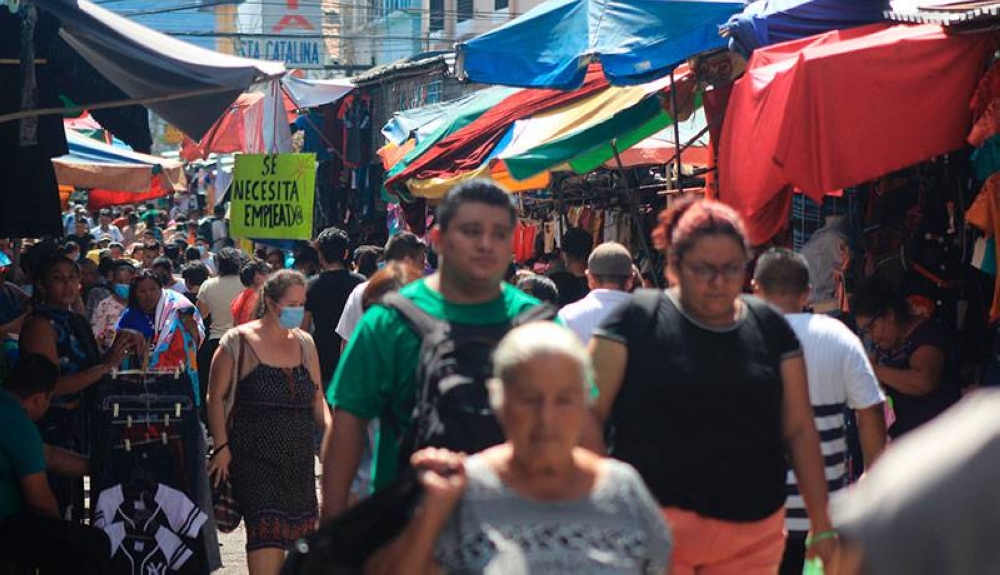Latin America is coping with the crisis caused by the war in Ukraine, but it will do little if it does not participate more in the global economy, attract more investment, and leverage productive transfers and green industries. The World Bank stressed Tuesday.
The economies of Latin America and the Caribbean “show to be relatively resilient,” the organization says in its report “The elusive promise of integration opportunities in a changing global economy.”
The bank estimates that the region’s GDP will grow by 1.4% in 2023 and 2.4% in 2024, too small “to make any significant progress in poverty reduction.”
“The region has largely recovered from the pandemic crisis, but unfortunately returned to the low growth levels of the last decade,” said Carlos Felipe Jaramillo, World Bank Vice President for Latin America and the Caribbean, in a statement. .
The World Bank estimates that in 2023 Mexico will grow by 1.5%, Brazil by 0.8%, Colombia by 1.1%, Costa Rica by 2.7%, Ecuador by 3%, El Salvador by 2.3%, Bolivia by 2.7%, Guatemala by 3.2%, and Honduras by 3.5%. %, and Nicaragua is expected to grow by 3%. , Panama 5.7%, Paraguay 4.8%, Peru 2.4%, Dominican Republic 4.4%, Uruguay 1.8%. Conversely, Argentina will not grow (0%) and the two economies will contract. Chile will drop by 0.7% and Haiti by 1.1%.
The agency expects average inflation, excluding Argentina, to reach 7.9% in 2022, falling to 5% in 2023 after exceeding 100% in the last 12 months. 2022.
But there are still headwinds, including falling raw material prices, rising interest rates and an uncertain recovery in China, the region’s inevitable trading partner, “that could cloud the outlook again,” he warned.
Moreover, the impact of recent bank failures in the US and Europe is “not yet seen.”
“paradox”
According to the World Bank, the region has reached a “paradox of lack of integration”, i.e., “macroeconomic stability, so to speak, normal levels, which should attract more investment and generate growth, but generally Quite the opposite,” said William Maloney, the World Bank’s chief economist for Latin America and the Caribbean, at a news conference on Tuesday.
For example, let’s look at the foreign direct investment (FDI) brought into the country for long-term stays, such as infrastructure.
“While global flows to developing countries have increased steadily since 1990, they have basically stagnated and declined in Latin America since around 2011,” he added.
Maloney told AFP that it was a “two-sided” problem, adding that “international trade, understood as the sum of exports and imports relative to GDP, has been stagnant or declining, with the exception of Mexico, where foreign direct “Investment is down,” he said. ” and other European countries.
According to the report, this kind of investment “has declined by 35% over the past decade” in Latin America.
According to the World Bank, total trade volume has increased by about 10% since 2020, but the region is still “10% less than a decade ago.”
what is this for?
Some Latin American countries have lower wages than Asia, but higher taxes and capital costs for production. Confidence in political and institutional stability is declining. Cross-border costs are high over time despite tariff reductions.
In addition, investment in commercial infrastructure is “little and inadequate,” digital access is neglected, cities are “relatively overcrowded,” and human capital is poorly trained, Maloney said. I’m here.
All this takes place within the context of changing the center of gravity. The United States continues to be a major destination for exports, but if Mexico is excluded, China is the dominant partner with close ties to the northern giants.
transfer
The World Bank is not asking whether the region should “return to the more isolationist stance that has led to low growth and macroeconomic I think it should be a question of whether What should we do with better results?”
It’s an essential question to take advantage of opportunities such as ‘nearshoring’.
The World Bank estimates that “moving production closer to Asia is already benefiting Mexico” and “could partially reverse the de-industrialization process.”
Countries must find ways to become more attractive, especially leveraging green energy production, such as wind and solar, and their abundance of lithium and copper, the report said.
Source: Diario.Elmundo


